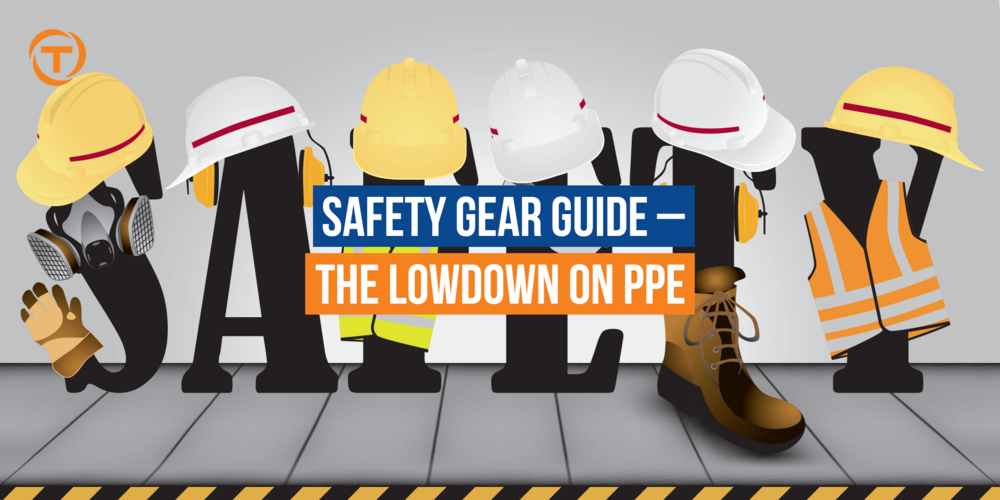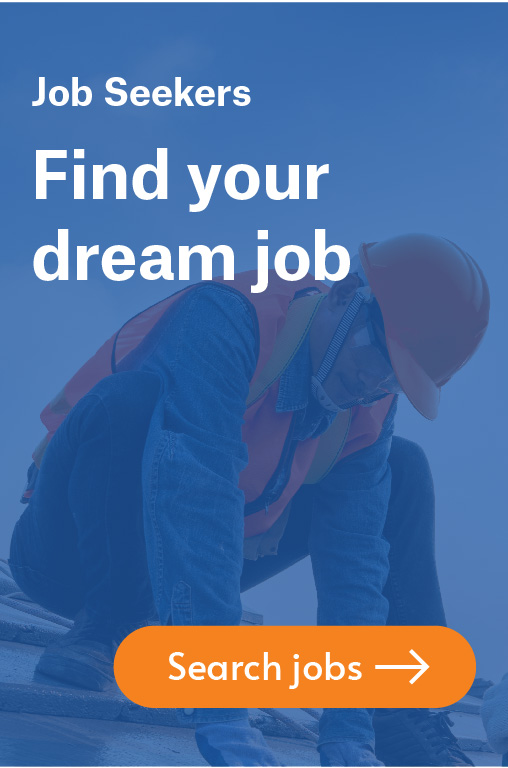So, you’ve scored a new job and been advised you’ll need to wear or bring PPE gear. What exactly is PPE and what will I be expected to wear?
PPE stands for Personal Protective Equipment and in general terms, it’s any kind of equipment or gear that is worn by employees to minimise the risk injury or ill health.
Employers in many industries including building construction, manufacturing, trades, industrial and mining are required to be dedicated and focused on practicing the highest levels of safety, so when you are appointed to a new role, you’ll be advised exactly which PPE gear you’ll be expected to wear.
According to Safe Work Australia (2020), 39 per cent of all injury claims in their report resulted from falls, trips, slips and being hit by an object. With the right use and wear of correct PPE, many of these injuries may have been minimised - if not completely avoided.
So, here is a list of basic safety wear first-time labourers, contractors, tradespeople and construction workers may need on the job and some advice on how to make the right choice when purchasing these items.
Hard hat to keep the head on your shoulders protected
- The skull is actually made up of 22 different bones – not just the one which most people assume.
- Did you know the brain can’t actually feel pain – who would have thought?
Wearing a hard hat is the #1 rule for all labourers, tradies and employees where there is any risk of flying objects, debris, collision impact, electrocution and shock. When choosing you hard hat, it’s important to choose the right classification type – type 1 is for general industrial trade – and colour if you are in construction. Different employers may have different colour codes for different trades, so check with your employer which colour you need.
Glasses, goggles and ear plugs for your eyesight and hearing
- Seeing takes 50 per cent of your brain’s functionality.
- Did you know damage to your ears may affect your sense of taste as the nerves that run through your ear are connected to the taste buds on the front of your tongue and are linked to your brain?
When working with tools and across construction sites, one of the key risks are flying objects and particles which can cause vision problems should they come into contact with your eyes. Likewise, your ears may continuously be subjected to loud machinery, which might also damage your hearing. Many employers provide their own safety glasses and earplugs to be used by all the employees on their site.
Masks and respirators to protect your respiratory system
- Did you also know that your lungs are responsible for eliminating 70 per cent of waste simply by breathing?
Considering this organ does such an important job, the best thing you can do is minimise some of that waste making its way into your body by wearing a suitable protective piece to cover your nose and mouth while breathing. Masks and respirators can protect against millions and trillions of little dust particles. Depending on the job you do and the work environment you are in, you may need the basic dust mask or a more advanced type of respirator mask (P2 and N95), which protects against hazardous particles.
Durable and hi-vis clothing to cover up and be seen
- Skin is the body’s largest organ and is your body’s first line of defence against the outside world.
Workwear can help minimise or prevent cuts, injuries and sunburn as well as increase your visibility on site. Most workwear is made from thick, stretch fabrics and comes in high visibility or hi-vis colours, which gives your team a greater chance of seeing you on site, and therefore – minimises your chances of accidents.
Gloves for the all-impressive human hands
- Did you know that as a human, you have the most advanced hands and fingers of all the creatures on the planet?
So, it makes sense to care for such a uniquely capable piece of anatomy. Gloves will not only prevent lacerations and burns on the job, but they can also give you a better grip when carrying heavy objects – which can prevent you dropping the items you carry. Wearing the right glove for your job type will give you the best chance of protection against injury. Many come with insulation and are chemical resistant while still allowing the full mobility of your hands.
Work boots to carry the load and keep the foot intact
- Over the course of a day, your feet take a cumulative force of a couple hundred tonnes!
Knowing this, you’ll want to do all you can to equip your feet with the most comfortable, lightweight, protective footwear you can get your hands on – or feet into. First, make sure you are clear which boots ticks all the boxes in terms of the safety requirements for your particular job. Choose the right material, sole and toe protection where necessary. Here is a guide on the basics:
- Material – leather is the most durable and offers a high level of protection so it’s great for jobs like construction, however some jobs may only require a rubber, nylon or plastic boot.
- Sole – rubber soles offer comfort and slip resistance making them best for damp or wet environments. The lightness of Thermoplastic Polyurethane (TPU) is best for rugged terrain, and Ethelyn-vinyl acetate (EVA) is recommended in specific circumstances too.
- Toe protection – if you are in construction or dealing with heavy objects, a capped boot (whether it’s steel, aluminium or composite) will be a must for you. ms you carry. Wearing the right glove for your job type will give you the best chance of protection against injury. Many come with insulation and are chemical resistant while still allowing the full mobility of your hands.
Summary
- Personal Protective Equipment (PPE) is any kind of equipment or gear that is worn by employees to minimise the risk injury or ill health.
- There are some basic pieces of PPE or safety wear and gear most employees in building construction, manufacturing, trades, industrial and mining need to have while working in order to prevent and minimise injuries.
- Basic PPE includes hard hats, goggles and earplugs, masks or respirators, durable and hi-vis clothing, gloves and work boots.
- When choosing safety gear, it is important to make sure that it ticks all the boxes in terms of safety requirements for your particular job.
If you are open to new opportunities, contact a recruitment agency like Trojan Recruitment Group and receive advice from the experts in labour-hire, permanent and contract staff.
References
https://badworkwear.com.au/blogs/workwear/buying-work-boots-consider-these-five-thingshttps://www.safeworkaustralia.gov.au/ppe
https://www.safeworkaustralia.gov.au/statistics-and-research
https://www.gaia.com/article/10-interesting-facts-about-breathing
https://hearinginstitute.ca/fun-fact-friday-some-interesting-facts-about-ears-and-hearing/
https://www.healthline.com/health/fun-facts-about-the-brain#21-fun-facts-about-the-brain
https://forefrontdermatology.com/skin-fun-facts/
https://www.factsjustforkids.com/human-body-facts/hand-facts-for-kids/
https://www.dryospur.com/2019/10/18/6-interesting-hand-facts/
https://www.thegoodbody.com/foot-facts/
https://www.thegoodbody.com/foot-facts/
https://www.optimumsafetymanagement.com/blog/7-types-of-personal-protective-equipment-gloves/
https://blogs.cdc.gov/niosh-science-blog/2020/08/17/respirators-construction/
https://www.commerce.wa.gov.au/publications/information-sheet-respiratory-protective-equipment-fit-testing-requirements
https://www.workersshop.com.au/hard-hats-guide/


